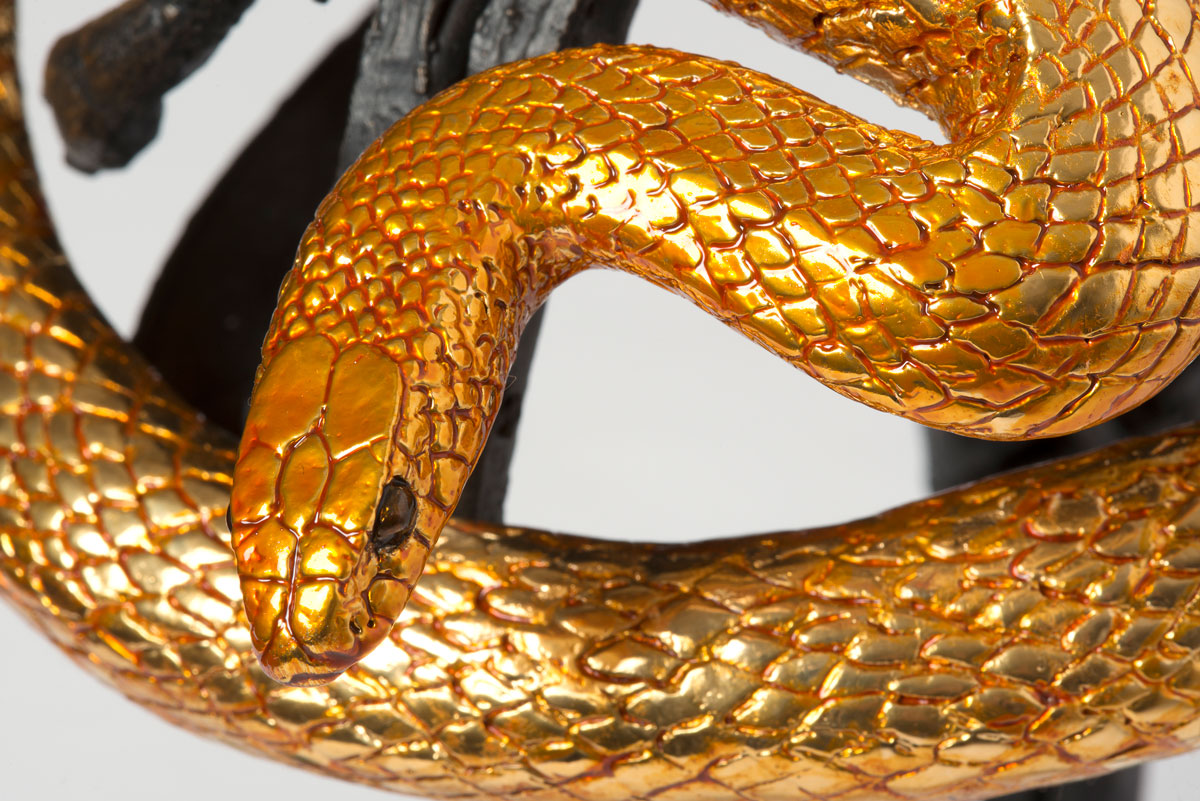snake sculptures
In 2005 I began a working on series of bronze Serpent sculptures. This interest in bronze and snakes led to a PhD research at the ANU School of Art, Hot Metal Casting Research Facility, completed in 2015. The focus of my study was on the elapid snakes of the Canberra district and snakes as real and imaginary creatures.
Of all the animals in the animal kingdom, I believe that the snake has the most language and cultural values projected upon it. The symbolic snake stands for a vast range of human attributes. As a consequence, actual snakes are misunderstood. In my culture, through the story of Genesis, people associate the snake with the concept of evil. Across the world however, the snake features in different Creation mythologies many of which are life-affirming and regenerative. According to ancient beliefs, the snake could prolong life, heal the sick, revive the dead, ensure fertility and counteract poisons. In this way the snake became a symbol of medicine and healing.
A snake is an amazing sculptural form and as an artist I take delight in observing and recording their endlessly evolving contours. In 2010 I cast a bronze sculpture called the staff of Asclepius. Known as the doctors’ symbol, it shows a Serpent entwined around a staff or a rod. The symbol originated from the Greek god of medicine, Asclepius. To emphasize a sense of rejuvenation and exaltation in my contemporary interpretation of the symbol I made the rod into a germinating seed.
Other Serpent bronzes include Sito made in 2008 and Lamia’s slippers. Sito is named after the Egyptian primeval Serpent that appears on the Papyrus of Ani. Ancient Egyptians worshipped Sito as a creative spirit. It was believed Sito created everything. By entwining his spiritual essence around the world Sito guarded the cosmic and subterranean world. In my sculpture, the head and the tail of Sito exist as two separate parts. Each section of the snake morphs into a human foot.
The relationship between human feet and snakes is acutely experienced when walking in the Australian bush in summer.
Another Creation myth set in the Garden of Eden in Genesis, Chapter 3, where God puts enmity between the Serpent and humans, declaring; “…he will crush your head and you will strike his heel.” The sculptural installation called Live created in 2006 explores this passage of the Bible. The installation at Canberra Museum and Gallery consisted of a Biblical Serpent made from wire and plaster and 47 pairs of papier-mâché feet.
Lamia’s slippers is the title of a bronze sculpture cast in 2006. It was shown in an installation at the Fremantle Arts Centre in 1999. These artworks were inspired by Lamia, a poem written by John Keats in 1819. The Romantic poem is about the transformation from a snake to a beautiful woman and back again. It explores many themes including beauty, temptation, deception, and mortality in a mythological world.
My sculpture talks about the indiscriminate killing of snakes for the fashion industry.
All photographs were taken by Brenton McGeachie.

my most recent works are available for purchase – request a catalogue today
Steven Mark Holland